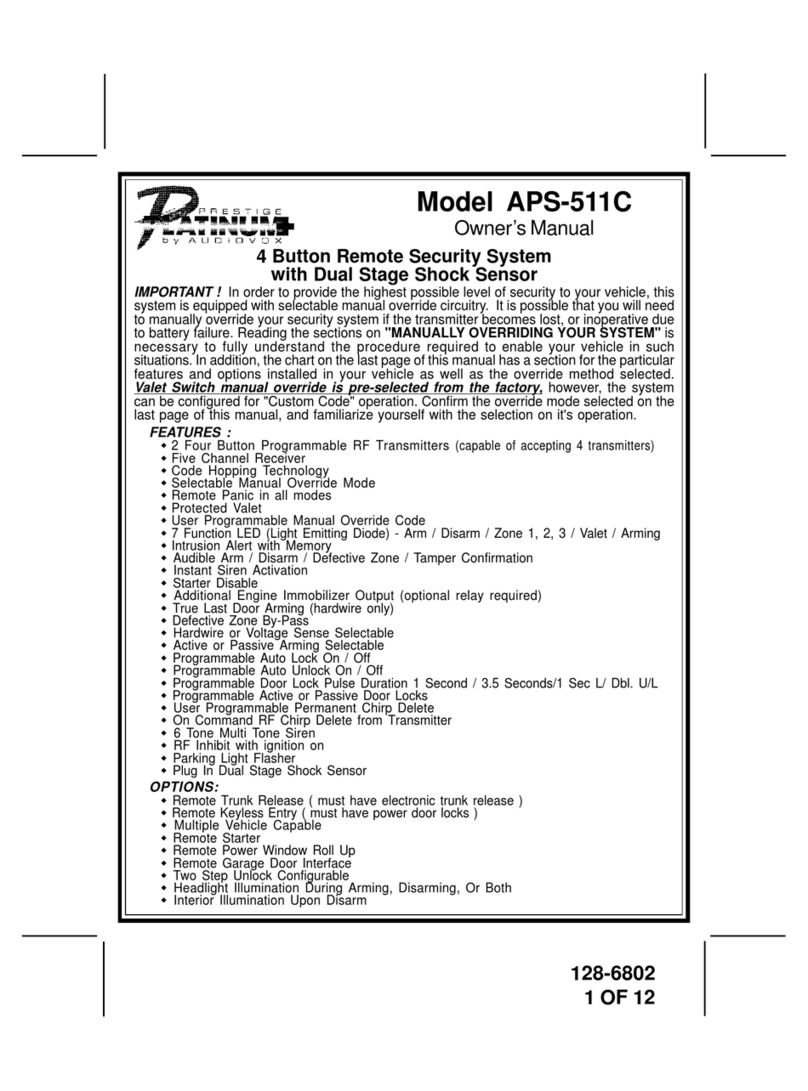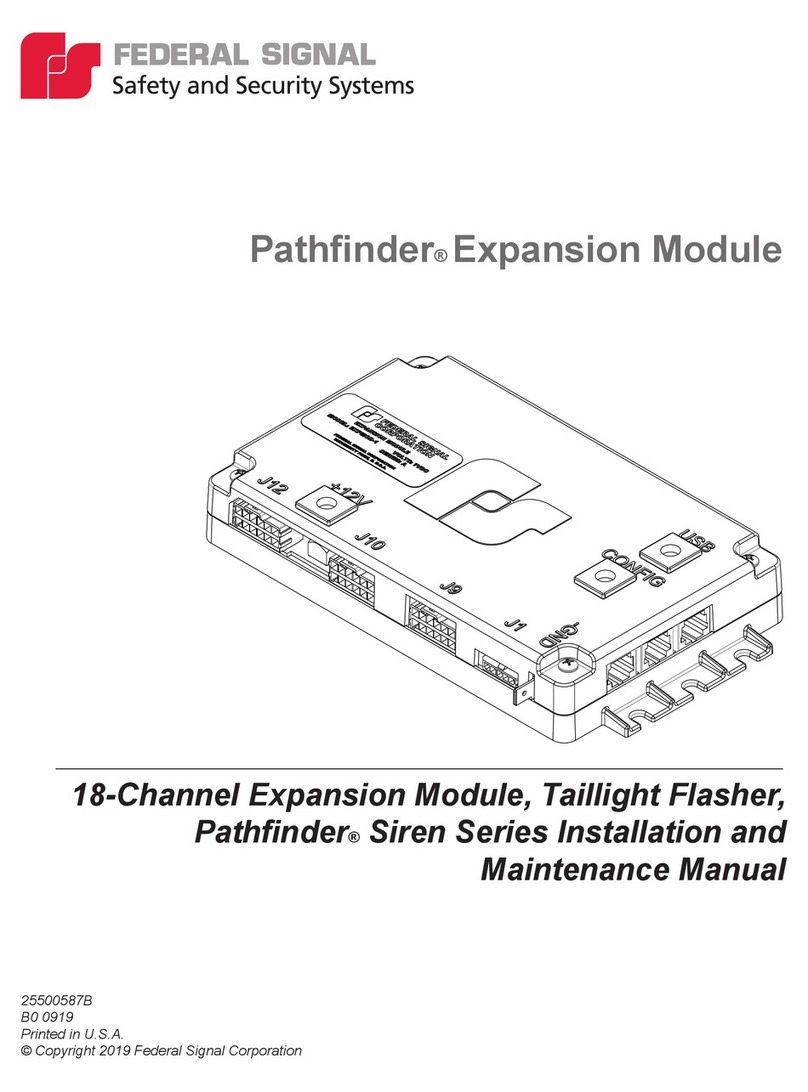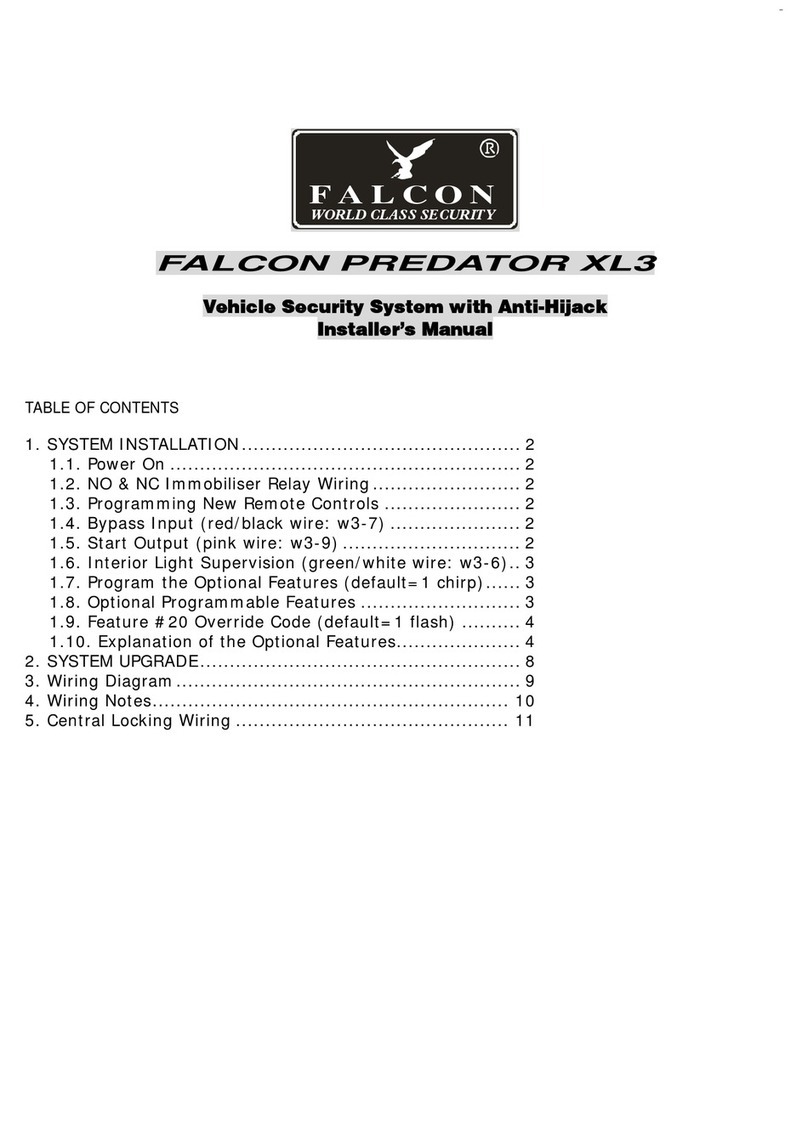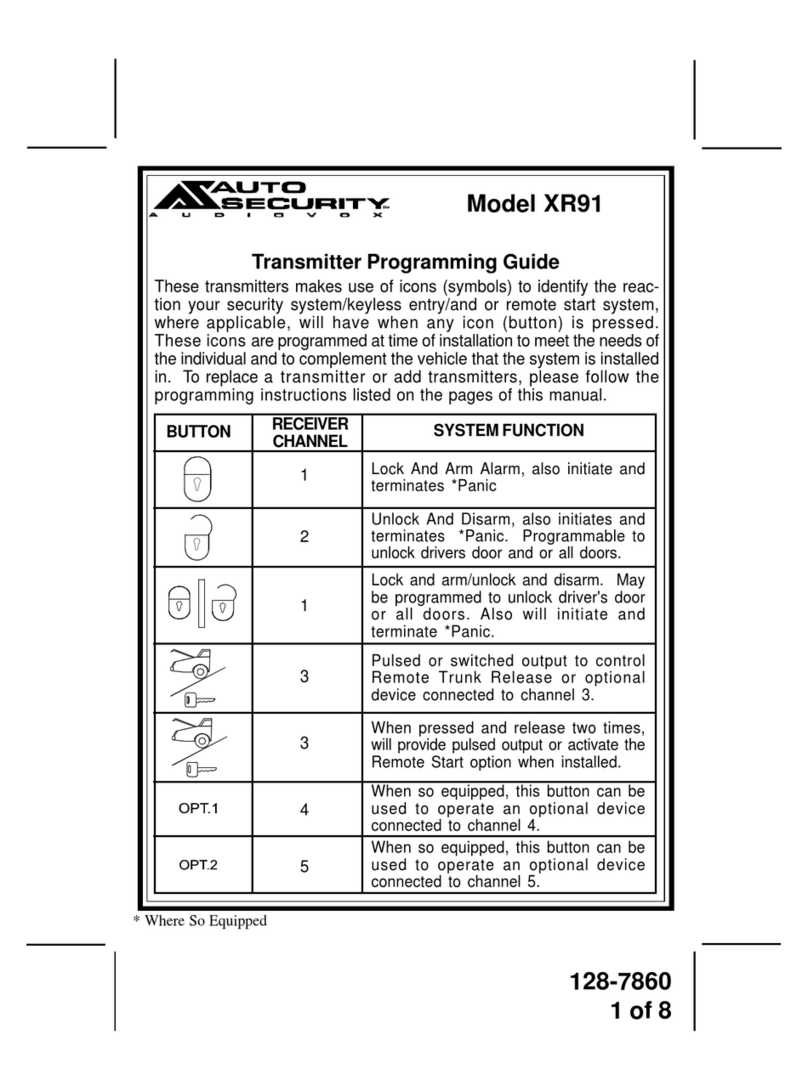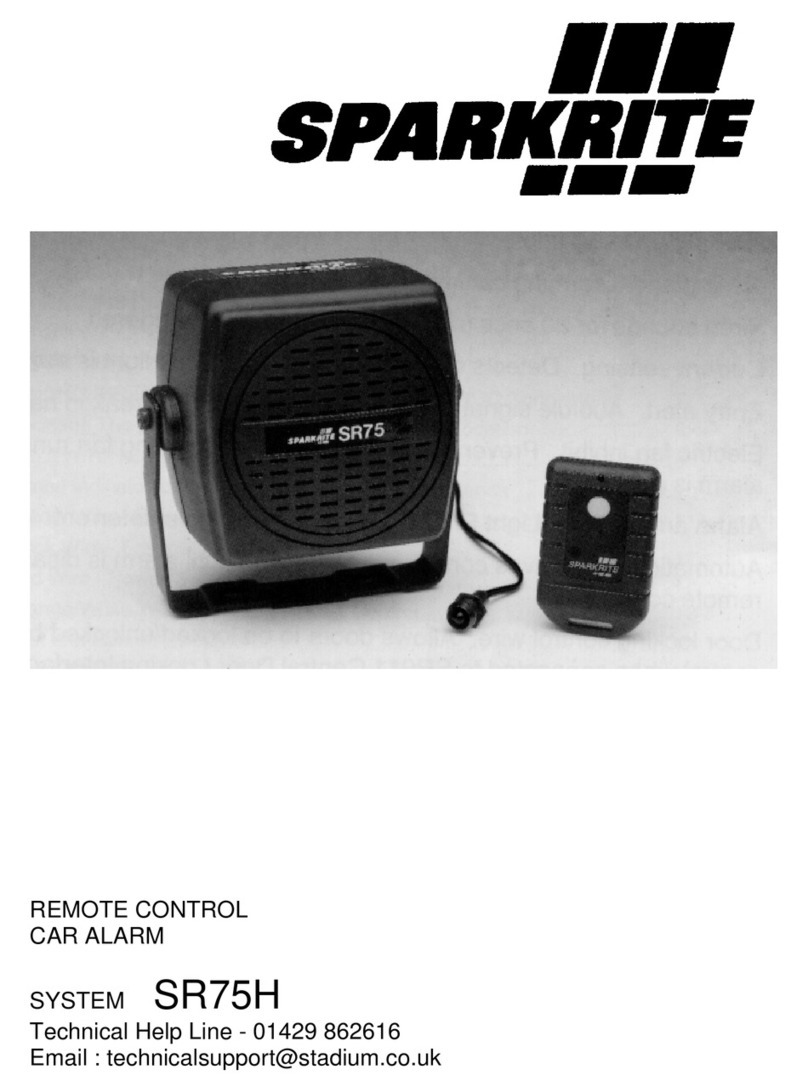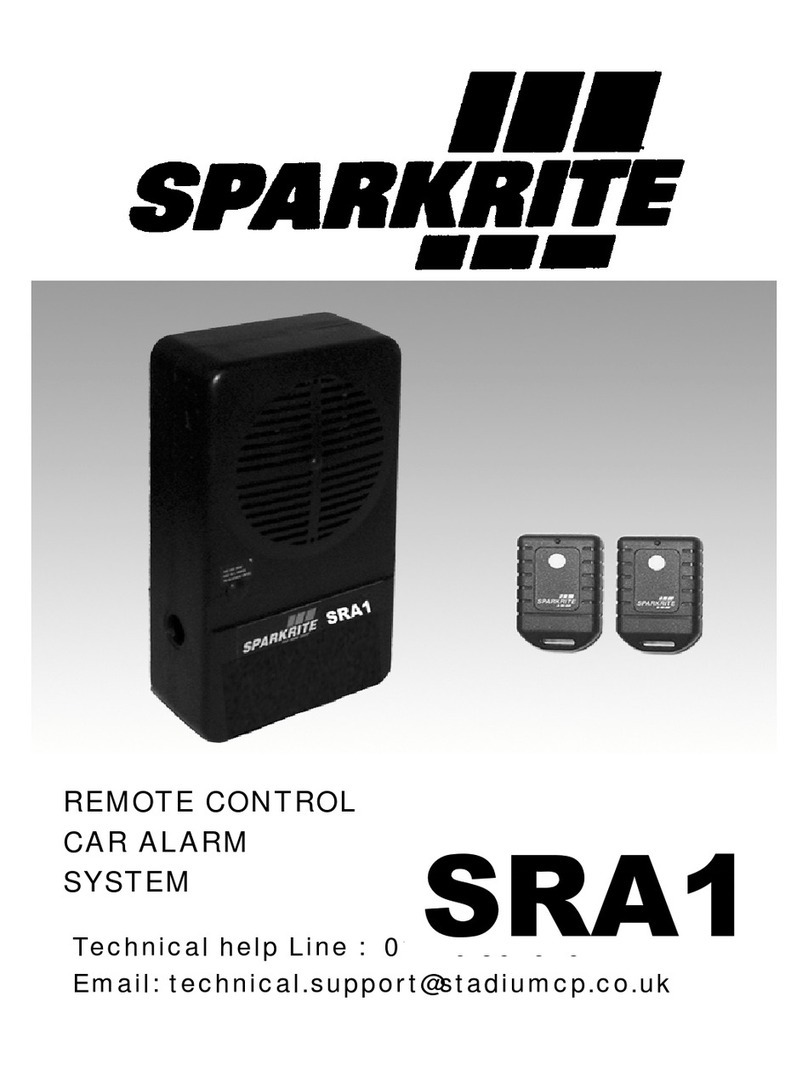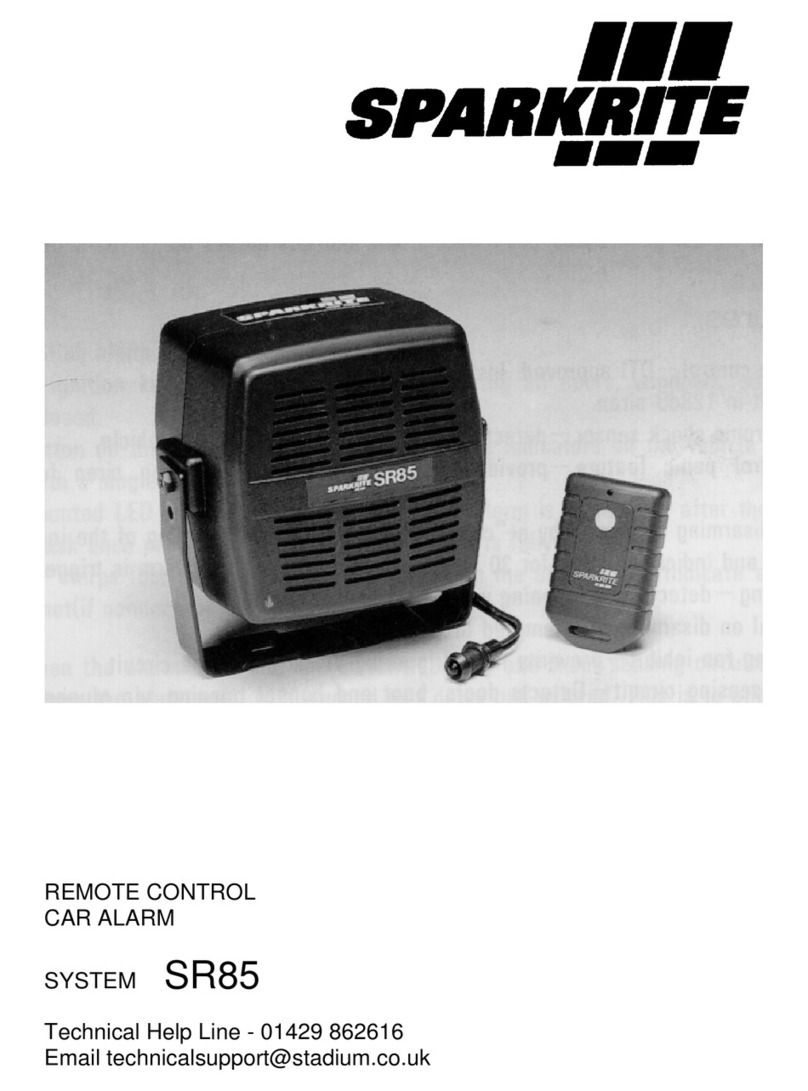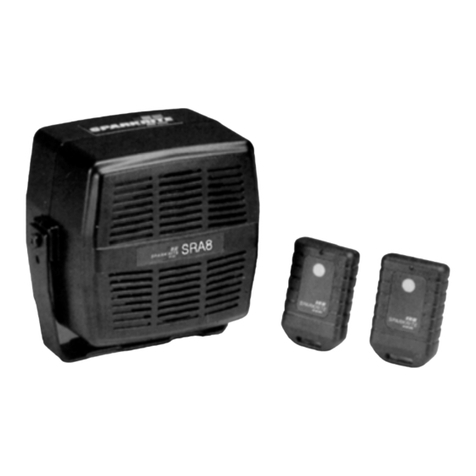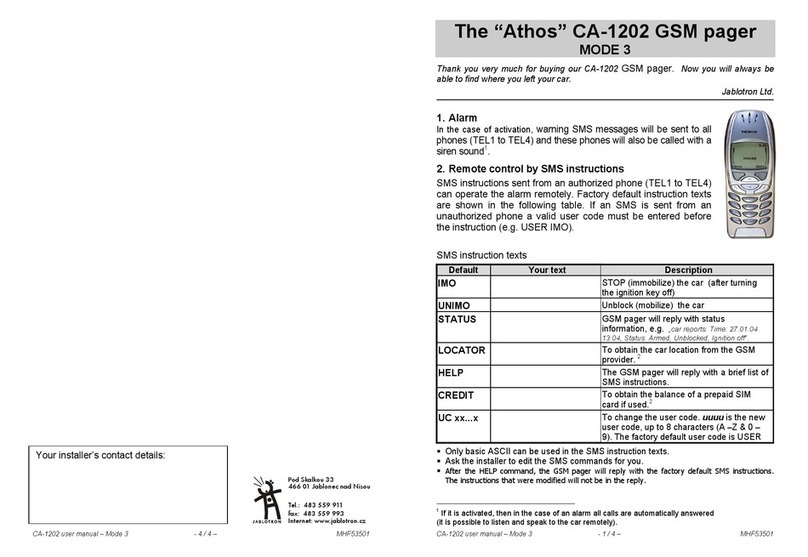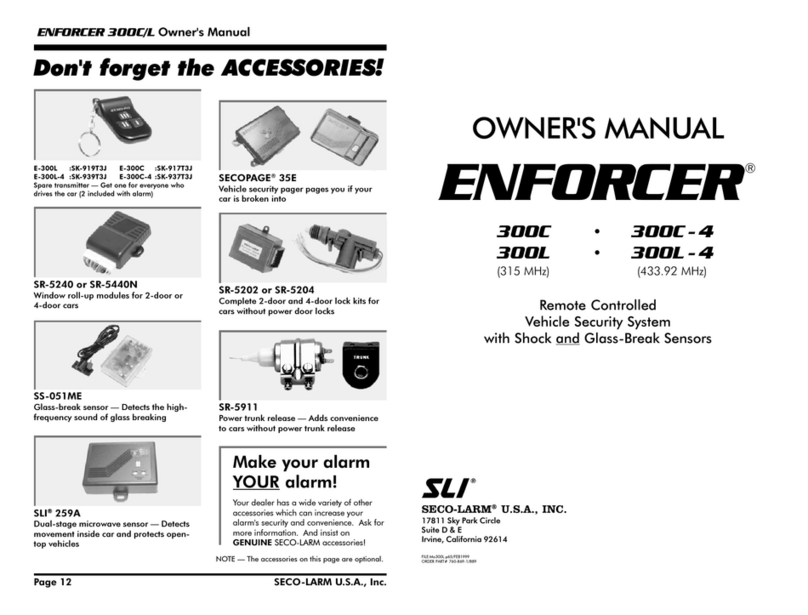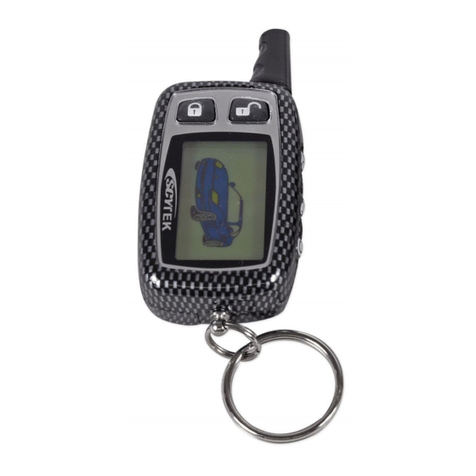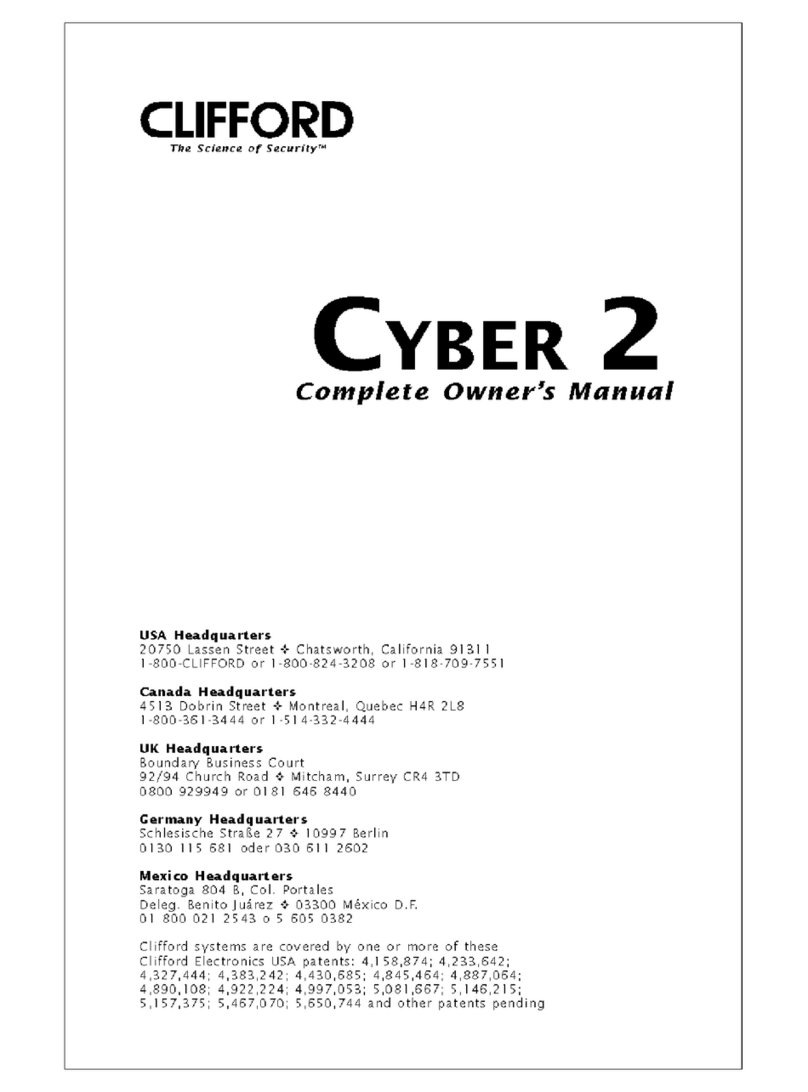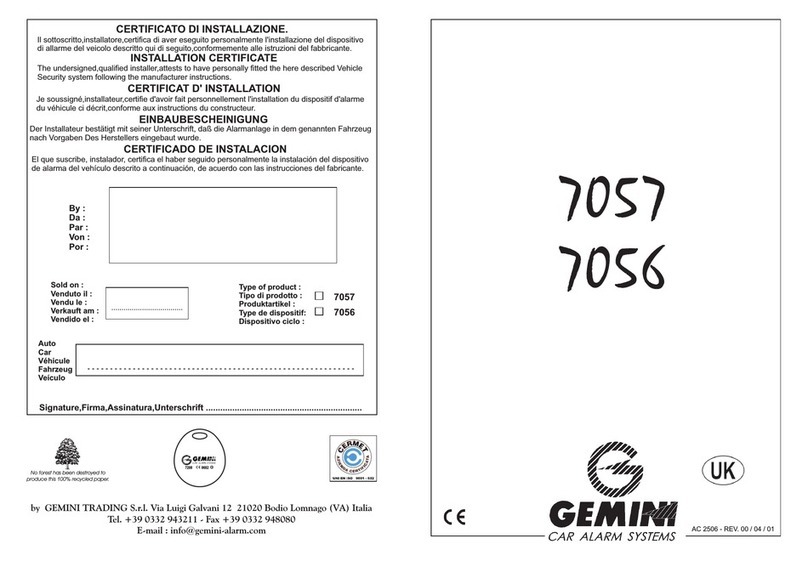
SR100 REMOTE CONTROL CAR ALARM SYSTEM
3
SPARKRITE SR100
REMOTE CONTROL CAR ALARM SYSTEM
The Sparkrite SR100 compact remote control car alarm system incorporates the
latest “state of the art” microprocessor technology offering the ultimate in product
reliability and performance. The unique easy-fit design offers easy installation and
ensures many years of trouble free operations.
Table of Contents
SR100 Features.................................................................................................................2
Operating Your Sparkrite SR100 Alarm System ............................................................... 4
Arming Your Alarm ............................................................................................................ 4
Door Open Alert.................................................................................................................4
Disarming Your Alarm........................................................................................................4
Entry Alert..........................................................................................................................4
Remote Panic .................................................................................................................... 5
Passive Arming/Current Sensing Disable..........................................................................5
Valet Alarm Override Feature............................................................................................6
Fitting Instructions..............................................................................................................7
Vehicle Wiring Test and Installation Notes....................................................................... .7
Making Reliable Connections (and using IDC connector.................................................. 8
Mounting the Main Alarm Module & Harness Location .................................................. 8/9
SR100 Wiring Connections................................................................................................ 9
Armed Indicator LED ....................................................................................................... 10
Purple and Grey Wires-Indicators.................................................................................... 10
Green wire-Alarm Antenna..............................................................................................11
Yellow wire Electric Fan Inhibit........................................................................................11
Blue wire Door Switches..................................................................................................12
Black Wire-Earth..............................................................................................................12
Orange/White Wire-Central Locking................................................................................12
Pink Wire Ignition Input....................................................................................................13
Brown/Orange Wire-Vehicle Immobilisation....................................................................13
Red Wire-Power Supply Current Sensing..................................................................13/14
Boot and Bonnet Switches .............................................................................................. 14
Shock Sensor..............................................................................................................14/15
Testing the Alarm Installation ..........................................................................................15
Trouble Shooting Guide..............................................................................................17/18
Additional Remote Control Transmitters..........................................................................19
Technical Help Product & Approvals............................................................................... 19
Accessories for the SR100 Alarm.................................................................................... 20

